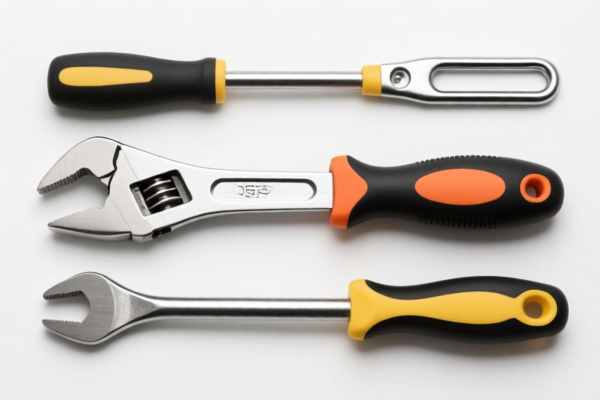| HS Code | Official Doc | Tariff Rate | Origin | Destination | Effective Date |
|---|---|---|---|---|---|
| 9018194000 | Doc | 55.0% | CN | US | 2025-05-12 |
| 9018902000 | Doc | 55.0% | CN | US | 2025-05-12 |
| 9031804000 | Doc | 55.0% | CN | US | 2025-05-12 |
| 9031808060 | Doc | 30.0% | CN | US | 2025-05-12 |
| 3822110000 | Doc | 30.0% | CN | US | 2025-05-12 |
| 3822190080 | Doc | 30.0% | CN | US | 2025-05-12 |
| 8543906500 | Doc | 55.0% | CN | US | 2025-05-12 |
| 8543906800 | Doc | 55.0% | CN | US | 2025-05-12 |




Diagnostic Tools
Diagnostic tools are instruments, devices, procedures, or systems used to identify the causes of illness or other problems. They encompass a broad range of applications, from medical testing to automotive repair, and even software troubleshooting. This entry focuses primarily on medical diagnostic tools, with brief mentions of other applications.
Medical Diagnostic Tools
Medical diagnostic tools are essential for healthcare professionals to accurately assess a patient’s condition, leading to effective treatment plans. They can be broadly categorized into several types:
1. Imaging Techniques: These tools create visual representations of the internal body structure and function.
- X-ray: Uses electromagnetic radiation to produce images of bones and dense tissues. Commonly used to detect fractures, pneumonia, and foreign objects.
- Computed Tomography (CT) Scan: Uses X-rays from multiple angles to create cross-sectional images. Provides more detailed images than standard X-rays, useful for detecting tumors, internal bleeding, and injuries.
- Magnetic Resonance Imaging (MRI): Uses strong magnetic fields and radio waves to create detailed images of organs and tissues. Excellent for visualizing soft tissues, the brain, and spinal cord.
- Ultrasound: Uses high-frequency sound waves to create images of internal organs. Often used during pregnancy, to examine the heart, and to guide biopsies.
- Positron Emission Tomography (PET) Scan: Uses a radioactive tracer to detect metabolic activity in the body. Useful for detecting cancer, heart disease, and brain disorders.
2. Laboratory Tests: These tests analyze samples of body fluids or tissues to identify abnormalities.
- Blood Tests: Commonly used to assess overall health, detect infections, measure cholesterol levels, and monitor organ function. Includes complete blood count (CBC), metabolic panel, and lipid panel.
- Urine Tests: Used to detect urinary tract infections, kidney problems, and diabetes.
- Biopsy: Involves removing a small sample of tissue for microscopic examination, often used to diagnose cancer.
- Microbiological Tests: Used to identify bacteria, viruses, and other microorganisms causing infections.
3. Endoscopic Procedures: Involve inserting a thin, flexible tube with a camera attached into the body to visualize internal organs.
- Colonoscopy: Examines the large intestine for polyps, cancer, and other abnormalities.
- Gastroscopy: Examines the esophagus, stomach, and duodenum.
- Bronchoscopy: Examines the airways of the lungs.
4. Physiological Tests: Measure the function of specific body systems.
- Electrocardiogram (ECG/EKG): Records the electrical activity of the heart.
- Electroencephalogram (EEG): Records the electrical activity of the brain.
- Pulmonary Function Tests (PFTs): Measure lung capacity and airflow.
5. Genetic Tests: Analyze DNA to identify genetic mutations associated with diseases.
Usage Scenarios
Diagnostic tools are used in a wide range of clinical settings:
- Routine Check-ups: Blood tests and physical examinations are used to assess overall health.
- Emergency Rooms: Imaging techniques and laboratory tests are used to quickly diagnose life-threatening conditions.
- Specialty Clinics: Specific diagnostic tools are used to diagnose and monitor conditions related to specific organ systems (e.g., cardiology, neurology, oncology).
- Preventive Screening: Tests like mammograms and colonoscopies are used to detect diseases at an early stage.
Other Applications
While the focus here is medical, diagnostic tools extend to other fields:
- Automotive Diagnostics: Tools are used to identify problems with vehicle engines, transmissions, and other systems. Often involves scanning for error codes.
- Software Diagnostics: Debugging tools and log analysis are used to identify and fix errors in computer programs.
- Industrial Maintenance: Tools are used to monitor the condition of machinery and prevent breakdowns.
Common Types (Summary Table)
| Tool Type | Purpose | Sample/Method |
|---|---|---|
| X-ray | Bone and dense tissue imaging | Electromagnetic radiation |
| CT Scan | Detailed cross-sectional imaging | X-rays from multiple angles |
| MRI | Soft tissue and brain imaging | Magnetic fields and radio waves |
| Ultrasound | Organ imaging | High-frequency sound waves |
| Blood Test | Overall health, infection detection | Blood sample |
| Urine Test | Urinary tract health | Urine sample |
| ECG/EKG | Heart electrical activity | Electrodes on the skin |
| Colonoscopy | Large intestine examination | Endoscopic procedure |
| Biopsy | Tissue analysis | Tissue sample |
| --- | ||
| Diagnostic tools encompass a range of instruments and reagents used for identifying diseases or conditions. Based on the provided information, several HS codes may be relevant. |
- 9018194000: This HS code covers instruments and appliances used in medical, surgical, dental or veterinary sciences, specifically electro-diagnostic apparatus (including apparatus for functional exploratory examination or for checking physiological parameters) and parts/accessories thereof. This would include apparatus for functional exploratory examination. The tax rate is 0.0% base tariff, 25.0% additional tariff, increasing to 30% after April 2, 2025, resulting in a total rate of 55.0%.
- 9018902000: This HS code covers other instruments and appliances used in medical, surgical, dental or veterinary sciences, including optical instruments and appliances and parts/accessories thereof. This could include certain types of diagnostic tools utilizing optical technology. The tax rate is 0.0% base tariff, 25.0% additional tariff, increasing to 30% after April 2, 2025, resulting in a total rate of 55.0%.
- 3822110000: This HS code covers diagnostic or laboratory reagents on a backing, prepared diagnostic or laboratory reagents (whether or not on a backing, whether or not put up in the form of kits) specifically for malaria. The tax rate is 0.0% base tariff, 0.0% additional tariff, increasing to 30% after April 2, 2025, resulting in a total rate of 30.0%.
- 3822190080: This HS code covers other diagnostic or laboratory reagents on a backing, prepared diagnostic or laboratory reagents (whether or not on a backing, whether or not put up in the form of kits), excluding those specifically for malaria. The tax rate is 0.0% base tariff, 0.0% additional tariff, increasing to 30% after April 2, 2025, resulting in a total rate of 30.0%.
It is important to note that the specific HS code will depend on the exact nature of the diagnostic tool, its function, and its intended use.
Regarding HS codes 3822110000 and 3822190080, please note that these relate specifically to diagnostic or laboratory reagents.
Customer Reviews
No reviews yet.